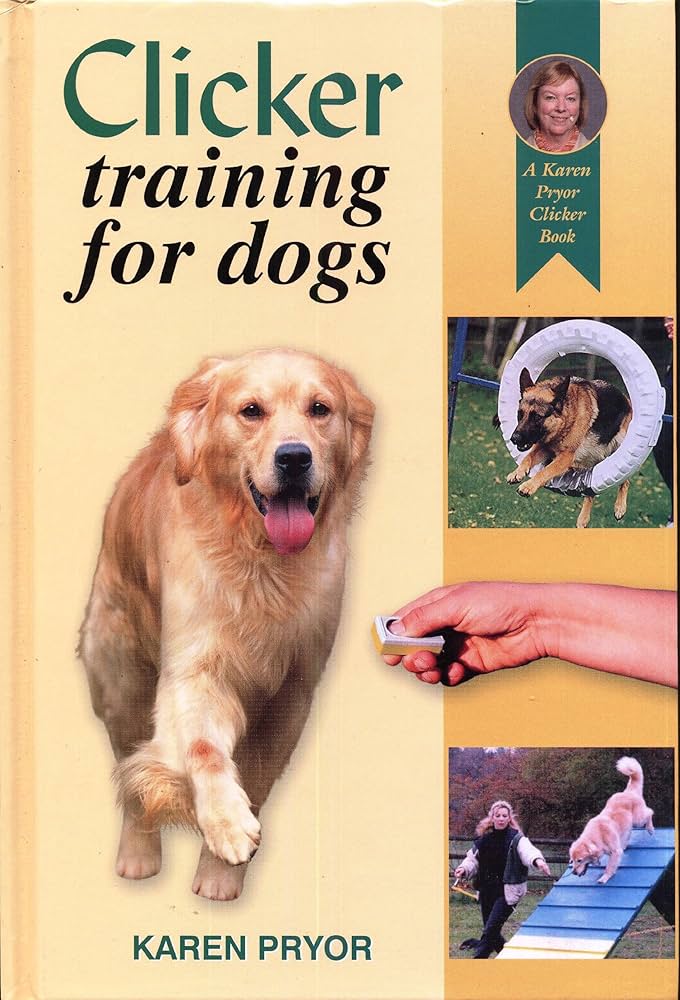Are you struggling to get your dog to listen, or searching for a humane, highly effective way to teach new skills? Traditional, punitive training methods are outdated and often damage your relationship with your pet. The solution lies in Clicker Training for Dogs: Step-by-Step Beginner Guide.
This proven method uses positive reinforcement to communicate precisely with your dog, shaping desirable behavior and transforming training sessions. By mastering the clicker, you gain a powerful tool for clear communication and building a stronger, happier bond with your canine companion.

Understanding the Science of Clicker Training for Dogs
The clicker is not magic, but a communication tool known as a marker signal, based on operant conditioning:
-
Precision: The click marks the exact moment your dog performs the desired behavior (e.g., the instant they sit).
-
Bridge: The click connects the action and the reward, telling your dog: “That’s correct, and a treat is coming.”
-
Positive Reinforcement: The sequence Action → Click → Reward builds strong, lasting behaviors without punishment.
👉For more background on positive reinforcement, see AKC’s dog training guide.
Step-by-Step Beginner Guide: Charging the Clicker
Before teaching commands, you must first “charge” the clicker so your dog understands its meaning.
-
Preparation: Hold 10–15 high-value treats (tiny bits of cheese, chicken, or training treats).
-
Click and Treat: Click once, then immediately give a treat. Timing is crucial.
-
Repeat: Do this 10–15 times. Don’t ask for behaviors—just build the association.
-
Test: If your dog looks expectantly after a click, the clicker is “charged.”
Teaching Basic Commands with Clicker Training for Dogs
Once charged, the clicker can help teach foundational commands.
Teaching “Sit” (Luring Method)
-
Setup: Stand with the clicker ready and treat in hand.
-
Lure: Move the treat slowly over your dog’s head.
-
Behavior: Their rear will naturally lower into a sit.
-
Click and Reward: The instant they sit, click and give the treat.
-
Add Cue: After repetition, add the word “Sit” just before the behavior.
Troubleshooting Common Clicker Training Problems
| Problem | Description | Solution |
|---|---|---|
| Clicking Too Slow | The click comes after the behavior. | Practice with a partner. If late, skip and wait. |
| Weak Rewards | Treats aren’t motivating enough. | Use tiny, high-value treats (hot dog, cheese). |
| Clicker Dependence | Dog only responds when they see the clicker. | Transition to a verbal marker (“Yes!”). |
👉
Learn more about reward strategies at PetMD’s dog training hub.
Next Steps in Positive Reinforcement
After the basics of Clicker Training for Dogs: Step-by-Step Beginner Guide, you can progress further:
-
Shaping: Reward tiny steps toward a complex goal (e.g., “roll over”).
-
Proofing: Practice commands in distracting environments.
-
Fading the Clicker: Transition to verbal markers for daily use.
Once you have mastered the basics, you can also use clicker training for dogs to teach fun tricks such as spinning, weaving between legs, or even retrieving toys.
Frequently Asked Questions (FAQ)
Q: Can I use clicker training for older dogs?
A: Yes! Positive reinforcement works for dogs of all ages—even seniors can learn new tricks.
Q: How often should I train my dog?
A: Keep sessions short: 5–10 minutes, 2–3 times daily.
Q: Does the clicker replace verbal commands?
A: No. The clicker marks when your dog is correct, while verbal cues tell them what to do.
Q: Why do people ask about Clicker Training for Dogs: Step-by-Step Beginner Guide?
A: Because it’s one of the most effective and humane ways to shape dog behavior, widely recommended by trainers.
Compliance Statement
Disclaimer: This article provides general information on Clicker Training for Dogs: Step-by-Step Beginner Guide. It is not a substitute for professional advice. Dogs with aggression or anxiety may need help from a certified trainer (CPDT-KA) or Veterinary Behaviorist.